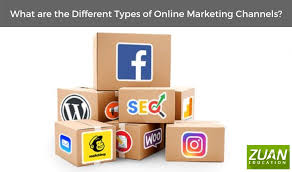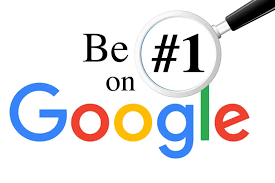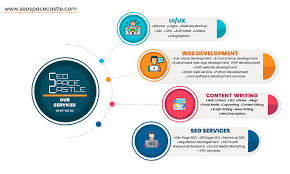Exploring Online Advertising Channels
Online advertising has become an integral part of marketing strategies for businesses looking to reach their target audience in the digital realm. With a plethora of online advertising channels available, businesses have a variety of options to choose from to promote their products or services effectively.
Social Media Advertising
Social media platforms such as Facebook, Instagram, Twitter, and LinkedIn offer powerful advertising opportunities to businesses. With precise targeting options based on demographics, interests, and behaviours, social media advertising allows businesses to reach a highly specific audience.
Search Engine Marketing (SEM)
Search Engine Marketing involves placing ads on search engine result pages. Pay-Per-Click (PPC) campaigns allow businesses to bid on keywords relevant to their products or services. When users search for those keywords, the ads appear at the top of the search results, driving targeted traffic to the business website.
Display Advertising
Display advertising includes banner ads, pop-up ads, and video ads placed on websites and apps. These visual advertisements can help increase brand awareness and drive traffic to a business’s website. Display ads can be targeted based on user behaviour and interests.
Email Marketing
Email marketing remains a powerful online advertising channel for businesses. Sending promotional emails to a targeted list of subscribers can help drive conversions and nurture customer relationships. Personalised email campaigns tailored to individual preferences can yield high engagement rates.
Affiliate Marketing
Affiliate marketing involves partnering with individuals or other businesses (affiliates) who promote products or services in exchange for a commission on sales generated through their referral links. This performance-based model can help expand reach and drive sales through third-party promotion.
In conclusion, online advertising channels offer diverse opportunities for businesses to connect with their target audience and achieve marketing objectives. By leveraging the strengths of each channel and implementing strategic campaigns, businesses can maximise their online presence and drive growth in the digital landscape.
Exploring Digital Promotion: A Guide to Online Advertising Channels and Strategies
- What are the most effective online advertising channels for reaching a target audience?
- How can social media advertising help businesses promote their products or services?
- What is the difference between Search Engine Marketing (SEM) and Search Engine Optimisation (SEO)?
- How do display ads work on websites and apps as part of online advertising strategies?
- What are the benefits of email marketing as an online advertising channel?
- How does affiliate marketing differ from other online advertising methods?
- Which online advertising channels offer the best return on investment for businesses?
- What targeting options are available for businesses using online advertising channels?
- How can businesses measure the success of their online advertising campaigns across different channels?
What are the most effective online advertising channels for reaching a target audience?
When considering the most effective online advertising channels for reaching a target audience, it is essential to evaluate the specific characteristics of the audience and the goals of the advertising campaign. Social media advertising on platforms like Facebook and Instagram can be highly effective for targeting specific demographics and interests. Search Engine Marketing (SEM) through platforms like Google Ads allows businesses to reach users actively searching for relevant products or services. Additionally, email marketing remains a powerful tool for nurturing customer relationships and driving conversions. By utilising a combination of these channels tailored to the target audience, businesses can maximise their reach and engagement in the digital landscape.
How can social media advertising help businesses promote their products or services?
Social media advertising offers businesses a powerful platform to promote their products or services to a highly targeted audience. By utilising the precise targeting options available on platforms such as Facebook, Instagram, Twitter, and LinkedIn, businesses can reach users based on demographics, interests, behaviours, and more. This targeted approach ensures that businesses can tailor their messages to resonate with specific audience segments, increasing the likelihood of engagement and conversions. Additionally, social media advertising allows businesses to leverage visual content and interactive formats to capture users’ attention effectively. Through strategic ad placements and compelling creatives, businesses can enhance brand visibility, drive website traffic, generate leads, and ultimately boost sales through social media advertising campaigns.
What is the difference between Search Engine Marketing (SEM) and Search Engine Optimisation (SEO)?
When it comes to online advertising channels, a frequently asked question revolves around the difference between Search Engine Marketing (SEM) and Search Engine Optimisation (SEO). SEM involves paid strategies to increase a website’s visibility on search engine results pages through techniques like pay-per-click advertising. On the other hand, SEO focuses on improving a website’s organic search rankings by optimising content, keywords, and technical aspects to enhance visibility without direct payment. While SEM provides immediate results through paid ads, SEO is a long-term strategy that aims to boost organic traffic and improve search engine rankings over time. Understanding the distinctions between SEM and SEO is crucial for businesses looking to enhance their online presence effectively.
How do display ads work on websites and apps as part of online advertising strategies?
Display ads are a key component of online advertising strategies, working by appearing on websites and apps to capture the attention of users. These visual advertisements can take the form of banner ads, pop-up ads, or video ads strategically placed within the content or sidebar of a webpage or app interface. By targeting specific audiences based on their browsing behaviour, interests, or demographics, display ads aim to increase brand visibility, drive traffic to a business’s website, and ultimately generate leads or conversions. Through effective design and placement, display ads play a vital role in enhancing brand awareness and engaging potential customers in the digital landscape.
What are the benefits of email marketing as an online advertising channel?
Email marketing offers a range of benefits as an online advertising channel. One key advantage is its ability to deliver targeted and personalised messages directly to a subscriber’s inbox, allowing businesses to tailor their content based on individual preferences and behaviours. Additionally, email marketing is a cost-effective way to reach a large audience, with the potential for high conversion rates and ROI. It also provides valuable insights through analytics and tracking tools, enabling businesses to measure the success of their campaigns and make data-driven decisions for future marketing strategies. Overall, email marketing remains a powerful tool for building customer relationships, driving engagement, and ultimately boosting sales in the digital landscape.
How does affiliate marketing differ from other online advertising methods?
Affiliate marketing stands out from other online advertising methods due to its unique performance-based model. Unlike traditional advertising where businesses pay for ad space regardless of the outcome, affiliate marketing operates on a commission basis. Affiliates promote products or services through their channels and earn a commission only when a sale is made through their referral link. This results in a mutually beneficial relationship where businesses can expand their reach without upfront costs, and affiliates are incentivised to drive quality traffic and conversions. Affiliate marketing offers a cost-effective way to increase sales and brand awareness by leveraging the influence of partners within the digital landscape.
Which online advertising channels offer the best return on investment for businesses?
When considering the best return on investment for businesses in online advertising channels, it is essential to assess the specific goals and target audience of each business. Social media advertising can offer a high ROI due to its precise targeting options and engagement metrics, allowing businesses to reach a tailored audience effectively. Search Engine Marketing (SEM) through Pay-Per-Click campaigns can also provide a strong ROI by driving targeted traffic to websites based on relevant keywords. Additionally, email marketing is known for its high ROI potential through personalised campaigns that nurture customer relationships and drive conversions. Ultimately, the best online advertising channel for ROI will depend on factors such as budget, industry, and marketing objectives.
What targeting options are available for businesses using online advertising channels?
When it comes to utilising online advertising channels, businesses have a plethora of targeting options at their disposal to reach their desired audience effectively. From demographic targeting based on age, gender, location, and income level to psychographic targeting focusing on interests, values, and lifestyle choices, businesses can hone in on specific segments of the market. Behavioural targeting allows businesses to target users based on their online behaviour and interactions with websites and apps. Moreover, contextual targeting enables businesses to display ads on websites relevant to their products or services. With these diverse targeting options available across various online advertising channels, businesses can tailor their campaigns for maximum impact and engagement with their target audience.
How can businesses measure the success of their online advertising campaigns across different channels?
Businesses can measure the success of their online advertising campaigns across different channels by employing various key performance indicators (KPIs) to track and evaluate campaign performance. Metrics such as click-through rates, conversion rates, return on investment (ROI), cost per acquisition (CPA), and customer lifetime value can provide valuable insights into the effectiveness of each advertising channel. By setting clear objectives, defining relevant KPIs, and regularly analysing data, businesses can assess the impact of their campaigns, optimise strategies based on performance data, and make informed decisions to maximise their online advertising efforts across multiple channels.




